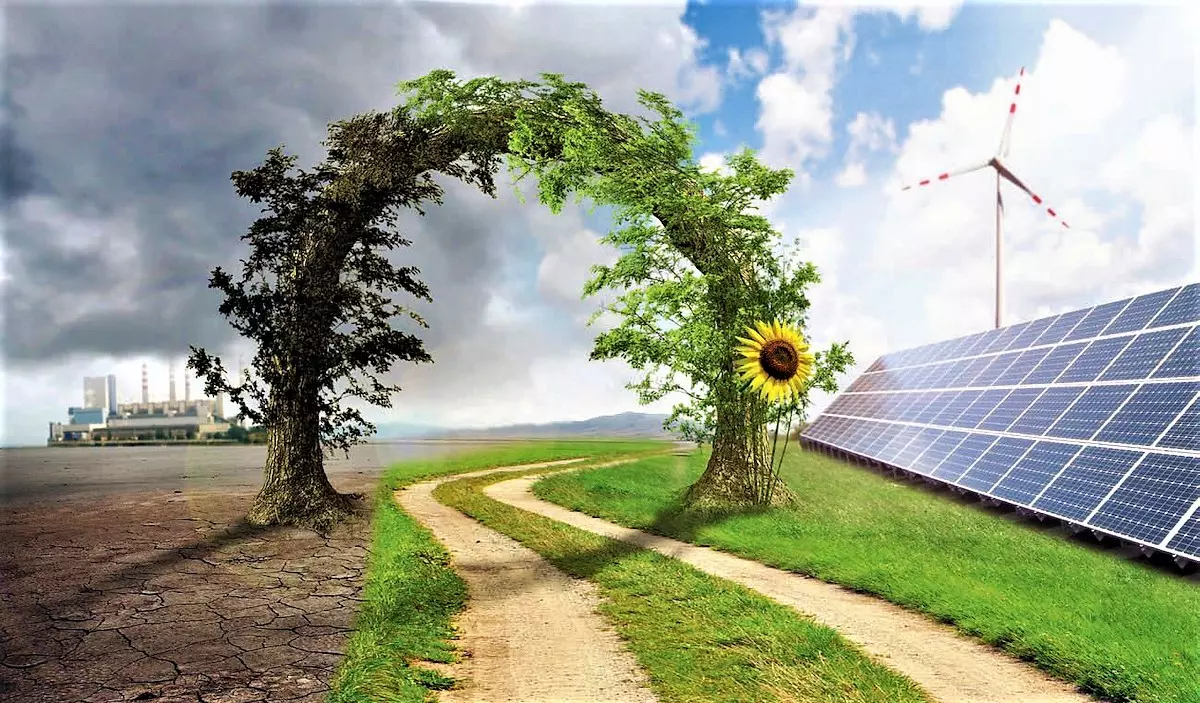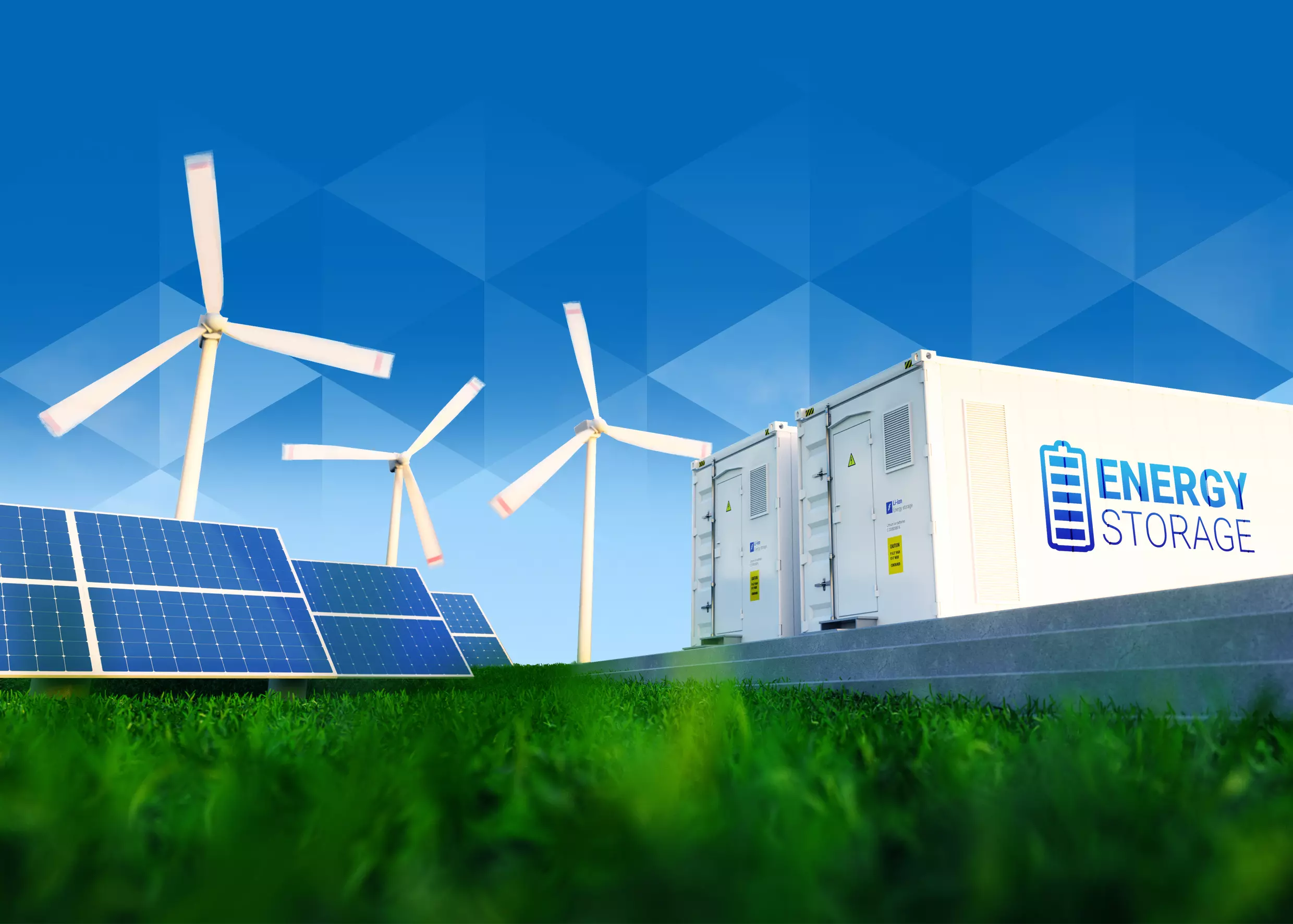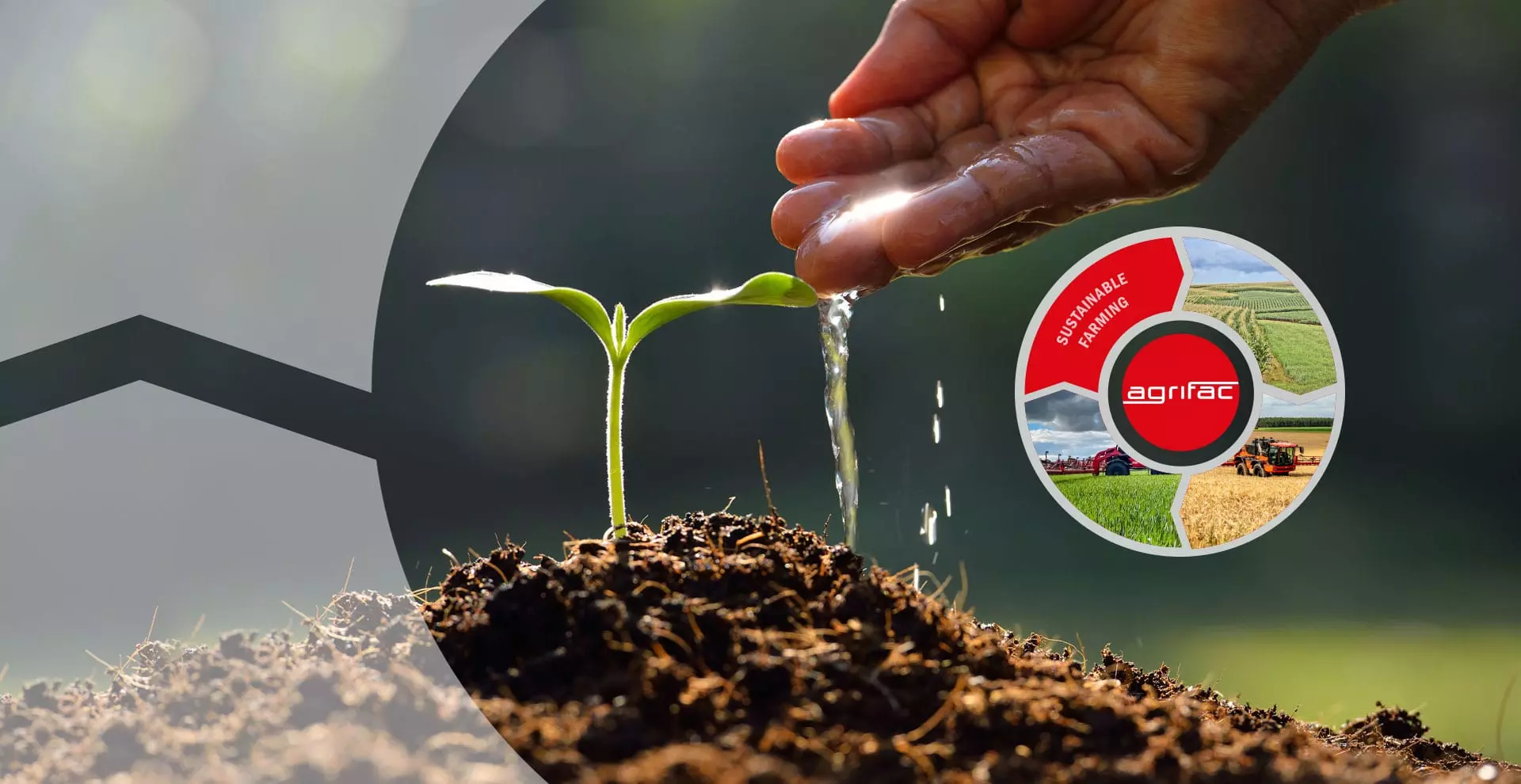In today’s rapidly evolving financial landscape, discerning investors seek more than just monetary gains – they yearn to align their portfolios with their values and contribute to a brighter, greener future. As sustainability takes center stage, opportunities abound for those eager to invest in the green economy. Welcome to TacticInvest, where we guide you through the top 10 investment opportunities in the green economy, empowering you to make informed decisions that not only yield impressive returns but also drive positive environmental change. Join us as we navigate the exciting terrain of renewable energy, sustainable agriculture, electric vehicles, and more, propelling you towards a future where profitability and sustainability harmoniously coexist.
| Investment Opportunity | Description |
| Renewable Energy | Invest in solar, wind, hydro, and geothermal power projects for clean, sustainable energy. |
| Sustainable Agriculture | Support organic farming, precision agriculture, and vertical farming for eco-friendly food production. |
| Electric Vehicles (EVs) | Invest in EV manufacturers, battery producers, and charging infrastructure for sustainable transportation. |
| Energy Storage | Explore battery technology companies and grid-scale energy storage projects for efficient energy management. |
| Green Building | Invest in green construction practices and sustainable building materials for eco-friendly infrastructure. |
| Water Treatment and Conservation | Support companies developing water treatment and conservation technologies for sustainable water management. |
| Carbon Capture and Storage (CCS) | Invest in CCS projects and companies developing carbon capture solutions to mitigate greenhouse gas emissions. |
| Sustainable Transportation | Explore public transit systems, bike-sharing programs, and alternative fuel infrastructure for sustainable mobility. |
| ESG Investing | Consider Environmental, Social, and Governance (ESG) focused investing for alignment with sustainability goals. |
| Circular Economy Initiatives | Support initiatives promoting resource conservation, waste reduction, and circular production models. |
Renewable Energy

In today’s fast-paced world, the quest for sustainable energy solutions has never been more pressing. As climate change looms large and the need for cleaner alternatives intensifies, investing in renewable energy has emerged as a beacon of hope in the fight against environmental degradation.
Renewable energy sources, including solar, wind, hydro, and geothermal power, are not only transforming the global energy landscape but also presenting lucrative investment opportunities for forward-thinking investors. These sustainable alternatives to traditional fossil fuels are not just a trend; they represent a fundamental shift towards a greener, more sustainable future.
One of the most promising sectors within renewable energy is solar power. With advancements in photovoltaic technology and declining costs of solar panels, solar energy has become increasingly competitive with traditional energy sources. From utility-scale solar farms to rooftop solar installations, the solar industry offers a diverse range of investment opportunities.
Similarly, wind power has experienced remarkable growth in recent years, with wind turbines dotting landscapes around the world. Wind energy projects, both onshore and offshore, continue to attract significant investment, driven by favorable government policies, technological advancements, and growing demand for clean energy.
Hydropower, another stalwart of renewable energy, harnesses the power of flowing water to generate electricity. While large-scale hydroelectric dams have been a mainstay of the renewable energy sector for decades, smaller-scale hydro projects and run-of-the-river facilities are also gaining traction as viable investment options.
Geothermal energy, often overshadowed by its more visible counterparts, holds immense potential as a reliable and sustainable energy source. By tapping into the Earth’s natural heat, geothermal power plants produce electricity with minimal environmental impact, making them an attractive investment for those seeking long-term stability in the energy market.
Investing in companies involved in the development and implementation of renewable energy technologies offers investors a chance to not only generate attractive returns but also contribute to the transition towards a low-carbon economy. From innovative startups to established industry leaders, the renewable energy sector is ripe with opportunities for those willing to embrace change and invest in a sustainable future.
However, like any investment, renewable energy carries its own set of risks and challenges. Fluctuating government policies, technological uncertainties, and market dynamics can all impact the success of renewable energy projects. Additionally, navigating the complex regulatory landscape and securing financing for large-scale projects can pose significant hurdles for investors.
Despite these challenges, the momentum behind renewable energy continues to grow, driven by increasing awareness of climate change and the urgent need to reduce carbon emissions. As governments, businesses, and consumers alike embrace clean energy solutions, the outlook for renewable energy investments remains bright.
In conclusion, investing in renewable energy is not just a smart financial decision; it’s a moral imperative. By allocating capital to projects that promote sustainability and combat climate change, investors have the power to drive positive change and shape a more sustainable future for generations to come.
Energy Storage

As the global transition towards renewable energy gains momentum, one crucial challenge looms large: how do we ensure a reliable and consistent power supply when the sun isn’t shining or the wind isn’t blowing? The answer lies in energy storage – the linchpin of a sustainable energy future.
With renewable energy sources like solar and wind becoming increasingly prevalent, the need for effective energy storage solutions has never been more urgent. Energy storage technologies play a vital role in balancing supply and demand, smoothing out the intermittent nature of renewable energy generation, and ensuring a stable and resilient grid.
At the forefront of this energy revolution are battery technology companies, driving innovation in energy storage systems. From lithium-ion batteries to emerging technologies like flow batteries and solid-state batteries, these companies are revolutionizing the way we store and utilize energy. With advancements in battery chemistry, manufacturing processes, and economies of scale, the cost of energy storage has plummeted in recent years, making it increasingly competitive with traditional fossil fuel-based power generation.
Investing in battery technology companies presents an exciting opportunity for investors looking to capitalize on the growing demand for energy storage solutions. Whether it’s supplying batteries for electric vehicles, grid-scale storage projects, or residential energy storage systems, these companies are poised to reap significant rewards as the energy transition accelerates.
But the potential for investment doesn’t stop at batteries. Grid-scale energy storage projects, which store excess energy generated during periods of low demand and release it when demand is high, are also attracting attention from investors. These projects, which can range from large-scale battery installations to pumped hydro storage facilities, play a crucial role in optimizing grid efficiency, reducing costs, and enhancing grid reliability.
Furthermore, advancements in software and energy management systems are enabling more efficient utilization of energy storage assets, unlocking new revenue streams and business models for investors. From providing frequency regulation services to participating in wholesale electricity markets, energy storage systems are increasingly seen as valuable assets in the transition towards a more flexible and decentralized energy system.
However, like any emerging industry, investing in energy storage comes with its own set of challenges and risks. Technological uncertainties, regulatory hurdles, and market dynamics can all impact the success of energy storage projects and companies. Moreover, the rapid pace of innovation in the sector means that investors must stay abreast of the latest developments and trends to make informed investment decisions.
Despite these challenges, the outlook for energy storage investments remains overwhelmingly positive. As governments around the world set ambitious targets for renewable energy deployment and grid modernization, the demand for energy storage solutions is expected to soar in the coming years. By investing in battery technology companies and grid-scale energy storage projects, investors have the opportunity not only to generate attractive returns but also to play a crucial role in shaping the future of energy.
Electric Vehicles (EVs)

The wheels of transportation are undergoing a silent revolution, one that promises to reshape the way we move and power our world. The transition to electric vehicles (EVs) is no longer a distant dream but a tangible reality, accelerating with each passing day. This seismic shift not only signifies a departure from traditional combustion engines but also heralds a new era of sustainability and innovation.
At the heart of this transformation lie electric vehicle manufacturers, pioneering the design and production of sleek, efficient, and environmentally friendly cars that are capturing the imagination of consumers worldwide. From established giants like Tesla to up-and-coming startups like Rivian and Lucid Motors, the EV market is teeming with opportunity for investors eager to ride the wave of electrification.
But the rise of EVs extends beyond the vehicles themselves; it encompasses an entire ecosystem of supporting industries, each playing a crucial role in enabling the widespread adoption of electric transportation. Battery producers, for instance, are at the forefront of this revolution, driving advancements in lithium-ion technology and pushing the boundaries of energy density and longevity. Companies like Panasonic, LG Chem, and CATL are leading the charge in supplying the batteries that power the EV revolution, presenting compelling investment opportunities for those with a keen eye for innovation and growth.
Moreover, the proliferation of electric vehicles necessitates a robust charging infrastructure to support their widespread adoption. Charging station networks are sprouting up across the globe, offering convenient and accessible charging solutions for EV owners on the go. Investing in companies involved in the development and deployment of charging infrastructure, such as ChargePoint, EVgo, and Electrify America, offers a promising avenue for investors looking to capitalize on the electrification trend.
Beyond the vehicles and infrastructure, a myriad of related technologies are poised to reshape the automotive landscape. From autonomous driving systems and advanced driver-assistance features to vehicle-to-grid integration and smart mobility solutions, the EV ecosystem is brimming with innovation and opportunity. Investing in companies at the forefront of these technologies, such as NVIDIA, Qualcomm, and Alphabet’s Waymo, allows investors to participate in the broader electrification narrative while diversifying their portfolios across complementary sectors.
However, like any burgeoning industry, the EV market comes with its own set of challenges and uncertainties. Fluctuating government policies, supply chain disruptions, and technological bottlenecks can all impact the success of EV investments. Moreover, the competitive landscape is rapidly evolving, with new entrants and disruptors vying for market share in this rapidly growing sector.
Despite these challenges, the momentum behind electric vehicles shows no signs of slowing down. With governments around the world setting ambitious targets for phasing out internal combustion engines and promoting clean transportation, the demand for EVs and related technologies is expected to soar in the coming years. By investing in EV manufacturers, battery producers, charging infrastructure, and related technologies, investors have the opportunity not only to generate attractive returns but also to contribute to a greener, more sustainable future for generations to come.
Sustainable Agriculture

In the heart of the rolling fields and verdant landscapes, a quiet revolution is taking root – one that promises to feed the world while nurturing the planet. Sustainable agriculture, with its emphasis on environmental stewardship and innovation, is emerging as a beacon of hope in the face of mounting food security challenges and ecological crises.
At its core, sustainable agriculture seeks to strike a delicate balance between meeting the world’s growing food demand and safeguarding the health of the planet. Gone are the days of indiscriminate use of pesticides and fertilizers; in their place are practices that prioritize soil health, water conservation, and biodiversity preservation. Organic farming, for instance, eschews synthetic inputs in favor of natural alternatives, fostering healthy ecosystems and resilient crops.
But sustainability in agriculture extends far beyond organic farming. Precision agriculture, enabled by cutting-edge technologies like GPS, drones, and data analytics, allows farmers to optimize resource use and minimize environmental impact. By precisely targeting inputs such as water, fertilizers, and pesticides, precision agriculture maximizes yields while minimizing waste, contributing to both environmental sustainability and economic efficiency.
Meanwhile, vertical farming represents a paradigm shift in agricultural production, leveraging vertical space and controlled environments to grow crops indoors. By reducing the need for arable land and minimizing water usage, vertical farming holds the promise of year-round, hyper-local food production in urban areas, mitigating the environmental footprint associated with traditional agriculture.
Investing in sustainable agriculture practices offers a compelling opportunity for investors seeking both financial returns and positive social and environmental impact. Companies involved in organic farming, precision agriculture technologies, and vertical farming systems are well-positioned to capitalize on the growing demand for sustainable food solutions. From innovative startups to established players, the sustainable agriculture sector is teeming with opportunities for those willing to embrace change and invest in a greener future.
Moreover, the benefits of sustainable agriculture extend far beyond the balance sheet. By promoting soil health and biodiversity, reducing greenhouse gas emissions, and conserving water resources, sustainable farming practices play a crucial role in mitigating climate change and safeguarding the planet for future generations. By investing in sustainable agriculture, investors have the opportunity to not only generate attractive returns but also contribute to a more resilient, equitable, and sustainable food system.
However, like any investment, sustainable agriculture comes with its own set of challenges and complexities. Market dynamics, regulatory frameworks, and technological uncertainties can all impact the success of sustainable agriculture investments. Moreover, the transition to sustainable practices often requires upfront investments in infrastructure, training, and research, which may pose barriers to entry for some investors.
Despite these challenges, the momentum behind sustainable agriculture continues to grow, driven by increasing consumer demand for ethically produced, environmentally friendly food products. With governments, businesses, and consumers alike recognizing the urgent need for a more sustainable approach to food production, the outlook for sustainable agriculture investments is brighter than ever.
In conclusion, investing in sustainable agriculture is not just a smart financial decision; it’s a moral imperative. By allocating capital to companies and projects that promote environmental sustainability, investors have the power to drive positive change and shape a more resilient, equitable, and sustainable food system for generations to come.
Green Building

In the bustling metropolises and burgeoning urban landscapes of today’s world, a silent revolution is underway – one that is reshaping the way we design, construct, and inhabit our built environment. Green building, with its emphasis on sustainability, energy efficiency, and environmental stewardship, is emerging as a cornerstone of modern architectural and construction practices.
At its essence, green building seeks to harmonize the built environment with the natural world, minimizing resource consumption, reducing waste, and mitigating environmental impact. From energy-efficient building designs and renewable energy integration to water-saving technologies and sustainable materials, green building encompasses a wide array of strategies aimed at creating healthier, more resilient, and more sustainable buildings and communities.
Central to the ethos of green building are energy efficiency measures that reduce the carbon footprint of buildings and decrease reliance on fossil fuels. From passive design strategies like orienting buildings to maximize natural light and ventilation to incorporating high-performance insulation and energy-efficient HVAC systems, green buildings are designed to minimize energy consumption and maximize comfort for occupants.
Moreover, water conservation plays a vital role in green building, with innovative technologies such as rainwater harvesting, greywater recycling, and low-flow fixtures helping to reduce water usage and promote water sustainability. By capturing and reusing rainwater and wastewater, green buildings not only minimize their environmental impact but also contribute to water resource management and resilience in the face of water scarcity.
Investing in companies specializing in green construction and retrofitting projects offers investors a promising avenue to capitalize on the growing demand for sustainable building solutions. From construction firms that specialize in green building practices to manufacturers of sustainable building materials and technologies, the green building sector presents a diverse array of investment opportunities.
Moreover, the benefits of green building extend beyond the bottom line. By reducing energy consumption, conserving water, and minimizing waste, green buildings contribute to environmental sustainability and help mitigate climate change. Furthermore, green buildings are associated with improved indoor air quality, enhanced occupant comfort, and increased productivity, leading to tangible social and economic benefits for building occupants and communities.
However, like any investment, green building comes with its own set of challenges and considerations. Regulatory requirements, market dynamics, and technological advancements can all impact the success of green building investments. Moreover, the upfront costs associated with green building practices and technologies may pose barriers to adoption for some developers and investors.
Despite these challenges, the momentum behind green building continues to grow, driven by increasing awareness of environmental issues, evolving regulatory frameworks, and shifting consumer preferences. With governments, businesses, and communities increasingly prioritizing sustainability and resilience in the built environment, the outlook for green building investments is brighter than ever.
In conclusion, investing in green building is not just a smart financial decision; it’s a commitment to building a better, more sustainable future for generations to come. By allocating capital to companies and projects that promote energy efficiency, water conservation, and environmental stewardship, investors have the opportunity to drive positive change and shape a built environment that is healthier, more resilient, and more sustainable for all.
Waste Management and Recycling

In the age of excess and consumption, the issue of waste management looms large as one of the defining challenges of our time. From overflowing landfills to plastic-choked oceans, the consequences of our throwaway culture are impossible to ignore. Yet, amid the mounting piles of waste, a glimmer of hope emerges – the promise of a circular economy, where resources are conserved, reused, and recycled in a perpetual cycle of sustainability.
At the forefront of this movement are waste management companies, tasked with the monumental challenge of managing and disposing of our ever-growing mountain of waste. From collection and transportation to sorting and disposal, these companies play a crucial role in ensuring that waste is handled safely, efficiently, and responsibly. Investing in waste management companies offers investors a unique opportunity to capitalize on the growing demand for sustainable waste solutions while generating attractive returns.
But waste management is not just about disposal; it’s also about recycling and recovery. Recycling technologies, ranging from advanced sorting systems to innovative material recovery processes, are transforming the way we view waste, turning what was once considered trash into valuable resources. Companies specializing in recycling technologies are leading the charge in developing innovative solutions to tackle the challenges of waste management and drive the transition towards a circular economy.
Moreover, circular economy initiatives aim to close the loop on resource consumption by designing products and systems that minimize waste and maximize resource efficiency. From product redesign and remanufacturing to extended producer responsibility schemes and closed-loop supply chains, circular economy initiatives present a holistic approach to waste management that holds immense promise for reducing waste and conserving resources.
Investing in circular economy initiatives offers investors the opportunity to not only generate financial returns but also contribute to a more sustainable and resilient future. By supporting companies and projects that prioritize resource conservation, waste reduction, and sustainable consumption, investors play a crucial role in driving positive change and shaping a more sustainable economy.
However, investing in waste management and recycling is not without its challenges. Market dynamics, regulatory frameworks, and technological advancements can all impact the success of waste management investments. Moreover, the complexity and variability of the waste stream present unique challenges that require innovative solutions and a proactive approach.
Despite these challenges, the momentum behind waste management and recycling continues to grow, driven by increasing awareness of environmental issues and evolving consumer preferences. With governments, businesses, and communities increasingly prioritizing sustainability and waste reduction, the outlook for waste management investments is brighter than ever.
In conclusion, investing in waste management and recycling is not just a smart financial decision; it’s a commitment to building a more sustainable and resilient future for generations to come. By allocating capital to companies and projects that prioritize resource conservation and waste reduction, investors have the opportunity to drive positive change and shape a world where waste is seen not as a problem but as a valuable resource to be cherished and reused.
Water Treatment and Conservation
In the delicate balance of our planet’s ecosystems, few resources are as precious and essential as water. Yet, despite its abundance, access to clean and safe water remains a pressing concern for millions around the globe. As populations grow, climates change, and natural water sources become increasingly polluted and depleted, the need for innovative water treatment and conservation technologies has never been more urgent.
At the forefront of this battle for water security are companies dedicated to developing and implementing cutting-edge water treatment, purification, and conservation technologies. From advanced filtration systems and desalination plants to water recycling and rainwater harvesting solutions, these companies are pioneering the way forward in ensuring access to clean and sustainable water for communities worldwide.
Investing in companies involved in water treatment and conservation technologies is not just a financial opportunity; it’s a moral imperative. By supporting companies that are working to address water scarcity and pollution, investors have the power to make a tangible difference in the lives of millions while generating attractive returns.
Water treatment technologies play a crucial role in purifying contaminated water sources and making them safe for consumption. Whether it’s removing harmful pollutants, bacteria, or chemicals from drinking water or treating wastewater before it is discharged back into the environment, water treatment technologies are essential for safeguarding public health and protecting the environment.
Similarly, water conservation technologies focus on minimizing water wastage and maximizing efficiency in water usage. From smart irrigation systems and leak detection technologies to low-flow fixtures and water-saving appliances, these technologies help communities and industries reduce their water footprint and mitigate the impacts of water scarcity.
Moreover, investing in water treatment and conservation technologies is not just about addressing immediate water challenges; it’s also about building resilience for the future. As climate change exacerbates water scarcity and extreme weather events, investing in resilient water infrastructure and innovative technologies becomes increasingly critical for ensuring water security and sustainability.
However, investing in water treatment and conservation is not without its challenges. Regulatory frameworks, market dynamics, and technological uncertainties can all impact the success of investments in this sector. Moreover, the complexity and variability of water resources present unique challenges that require innovative solutions and a proactive approach.
Despite these challenges, the momentum behind water treatment and conservation technologies continues to grow, driven by increasing awareness of water issues and the need for sustainable solutions. With governments, businesses, and communities increasingly prioritizing water security and sustainability, the outlook for investments in water treatment and conservation is brighter than ever.
In conclusion, investing in companies involved in water treatment, purification, and conservation technologies is not just a financial opportunity; it’s a chance to make a positive impact on the world. By supporting companies that are working to address water scarcity and ensure access to clean water for all, investors have the opportunity to drive positive change and shape a more sustainable and equitable future for generations to come.
Sustainable Transportation
In the bustling arteries of our cities and the winding roads of our countryside, the wheels of transportation are in motion, shaping the way we move and interact with our surroundings. Yet, as the world grapples with the twin challenges of climate change and urban congestion, the need for sustainable transportation solutions has never been more pressing.
While electric vehicles (EVs) have garnered much attention for their potential to reduce emissions and reliance on fossil fuels, sustainable transportation extends far beyond the realm of EVs. From efficient public transit systems and bike-sharing programs to alternative fuel infrastructure and pedestrian-friendly urban design, a plethora of innovative solutions are emerging to address the environmental and social challenges of modern mobility.
Investing in sustainable transportation solutions offers investors a unique opportunity to not only generate financial returns but also contribute to a more sustainable and equitable future for all. By supporting initiatives that prioritize emission reductions, congestion alleviation, and accessibility, investors can play a crucial role in driving positive change and shaping the future of transportation.
Public transit systems represent one of the most effective ways to reduce emissions and congestion in urban areas. Investing in the expansion and modernization of public transit infrastructure, including buses, trains, and light rail systems, can help encourage modal shifts away from single-occupancy vehicles and towards more sustainable modes of transportation.
Similarly, bike-sharing programs have emerged as a popular and environmentally friendly alternative to traditional modes of transportation. By investing in bike-sharing companies and infrastructure, investors can promote active transportation and reduce reliance on cars, thereby decreasing emissions and promoting healthier lifestyles.
Alternative fuel infrastructure, such as hydrogen refueling stations and compressed natural gas (CNG) filling stations, is also essential for facilitating the transition away from fossil fuels. By investing in the development and deployment of alternative fuel infrastructure, investors can support the adoption of cleaner and more sustainable transportation options while diversifying their portfolios.
Moreover, sustainable transportation solutions extend beyond the realm of technology and infrastructure to encompass urban design and planning. Investing in initiatives that prioritize walkability, bikeability, and mixed land use can help create more livable and sustainable communities, reducing the need for car travel and promoting healthier and more vibrant urban environments.
However, investing in sustainable transportation is not without its challenges. Regulatory frameworks, market dynamics, and technological uncertainties can all impact the success of investments in this sector. Moreover, the complexity and interconnectedness of transportation systems require a holistic approach to investment and planning.
Despite these challenges, the momentum behind sustainable transportation solutions continues to grow, driven by increasing awareness of environmental issues and the need for more resilient and equitable transportation systems. With governments, businesses, and communities increasingly prioritizing sustainability and mobility, the outlook for investments in sustainable transportation is brighter than ever.
In conclusion, investing in sustainable transportation is not just a financial opportunity; it’s a chance to make a positive impact on the world. By supporting initiatives that promote emission reductions, congestion alleviation, and accessibility, investors have the opportunity to drive positive change and shape a more sustainable and equitable future for generations to come.
Carbon Capture and Storage (CCS)
In the global fight against climate change, one technology stands out as a beacon of hope in the quest to reduce greenhouse gas emissions: carbon capture and storage (CCS). At its core, CCS aims to capture carbon dioxide (CO2) emissions from industrial processes and power generation facilities, preventing them from entering the atmosphere and contributing to global warming. By capturing CO2 and safely storing it underground or repurposing it for other industrial uses, CCS has the potential to significantly reduce emissions and mitigate the impacts of climate change.
Investing in CCS projects and companies developing innovative carbon capture solutions is crucial for accelerating the deployment of this technology and combating climate change. As governments, businesses, and communities around the world ramp up their efforts to reduce emissions and transition to a low-carbon economy, CCS presents a promising opportunity for investors to not only generate financial returns but also drive positive environmental impact.
CCS projects typically involve three main steps: capturing CO2 emissions from industrial sources, transporting the captured CO2 to storage sites, and safely storing the CO2 underground or utilizing it for other purposes. Companies specializing in each of these steps, from CO2 capture technologies to pipeline infrastructure and geological storage solutions, offer attractive investment opportunities for those looking to support the development and deployment of CCS.
Moreover, investing in companies developing innovative carbon capture technologies is essential for driving progress in this field. From breakthroughs in capture efficiency and cost reduction to advancements in CO2 utilization and storage methods, these companies are at the forefront of innovation in CCS and are poised to play a critical role in shaping the future of carbon capture.
However, investing in CCS is not without its challenges. Regulatory uncertainty, technological risks, and the high upfront costs associated with CCS projects can present barriers to investment. Moreover, the scalability and long-term viability of CCS solutions remain uncertain, requiring careful consideration and due diligence from investors.
Despite these challenges, the momentum behind CCS continues to grow, driven by increasing recognition of the urgency of addressing climate change and the need for scalable and cost-effective emissions reduction solutions. With governments, businesses, and investors increasingly prioritizing CCS as a key component of their climate strategies, the outlook for investments in CCS is promising.
In conclusion, investing in CCS projects and companies developing innovative carbon capture solutions is not just a financial opportunity; it’s a vital step towards combating climate change and securing a sustainable future for generations to come. By supporting the development and deployment of CCS, investors have the opportunity to drive positive environmental impact while also generating attractive financial returns.
ESG Investing
In the fast-paced world of finance, a new paradigm is emerging – one that seeks to align profitability with purpose, and prosperity with sustainability. Environmental, Social, and Governance (ESG) investing has quickly risen to prominence as investors increasingly recognize the importance of integrating sustainability criteria into their investment decisions. By considering factors such as carbon footprint, diversity, and ethical practices, ESG investing aims to generate positive environmental and social impact while delivering attractive financial returns.
At its core, ESG investing represents a shift towards a more holistic approach to investing, one that recognizes the interconnectedness of environmental, social, and governance factors with long-term financial performance. Rather than viewing sustainability as an afterthought or a constraint, ESG investors see it as an opportunity to mitigate risks, seize opportunities, and drive positive change in the companies and industries in which they invest.
One of the key pillars of ESG investing is environmental sustainability, which focuses on minimizing negative environmental impacts and promoting resource conservation. By investing in companies with low carbon footprints, sustainable supply chains, and environmentally friendly practices, investors can contribute to the transition to a low-carbon economy while reducing exposure to environmental risks such as climate change and resource scarcity.
Social considerations are also central to ESG investing, encompassing issues such as human rights, labor practices, and diversity and inclusion. Companies that prioritize fair labor practices, employee well-being, and diversity in their workforce are not only more resilient and adaptive but also more likely to attract and retain top talent and foster innovation and creativity.
Governance factors round out the ESG framework, focusing on issues such as board diversity, executive compensation, and transparency and accountability. Companies with strong governance practices are better equipped to manage risks, navigate regulatory challenges, and create long-term value for shareholders, while also fostering trust and confidence among investors and stakeholders.
Investing in ESG-focused funds and companies offers investors the opportunity to not only align their investments with their values and beliefs but also to generate competitive financial returns. Studies have shown that companies with strong ESG performance tend to outperform their peers over the long term, reflecting the growing recognition that sustainability and profitability are not mutually exclusive but complementary objectives.
Moreover, ESG investing is not just about maximizing financial returns; it’s also about creating positive impact and driving meaningful change in the world. By channeling capital towards companies and projects that prioritize sustainability, diversity, and ethical practices, ESG investors have the power to shape a more equitable, inclusive, and sustainable future for generations to come.
However, ESG investing is not without its challenges. Identifying meaningful ESG metrics, evaluating companies’ ESG performance, and measuring the impact of ESG investments can be complex and nuanced processes. Moreover, the lack of standardized reporting frameworks and inconsistent data quality can pose challenges for investors seeking to integrate ESG factors into their investment decisions.
Despite these challenges, the momentum behind ESG investing continues to grow, driven by increasing awareness of environmental and social issues, evolving regulatory frameworks, and shifting consumer preferences. With governments, businesses, and investors alike recognizing the importance of sustainability and responsible investing, the outlook for ESG investing is brighter than ever.
In conclusion, ESG investing represents a transformative shift in the way we think about investing, one that recognizes the interconnectedness of financial performance with environmental, social, and governance factors. By investing in ESG-focused funds and companies, investors have the opportunity to not only generate attractive financial returns but also to drive positive environmental and social impact and contribute to a more sustainable and equitable future for all.





